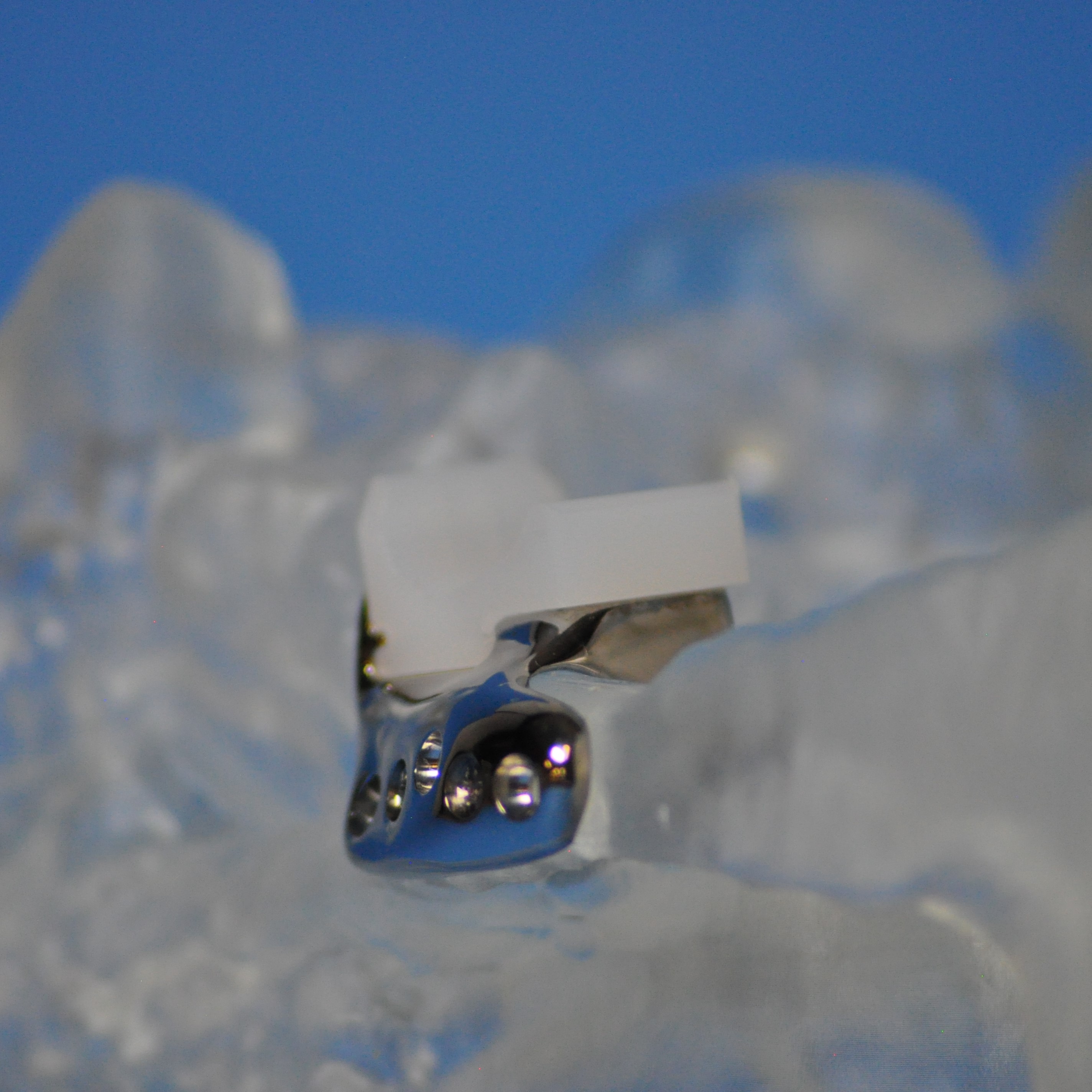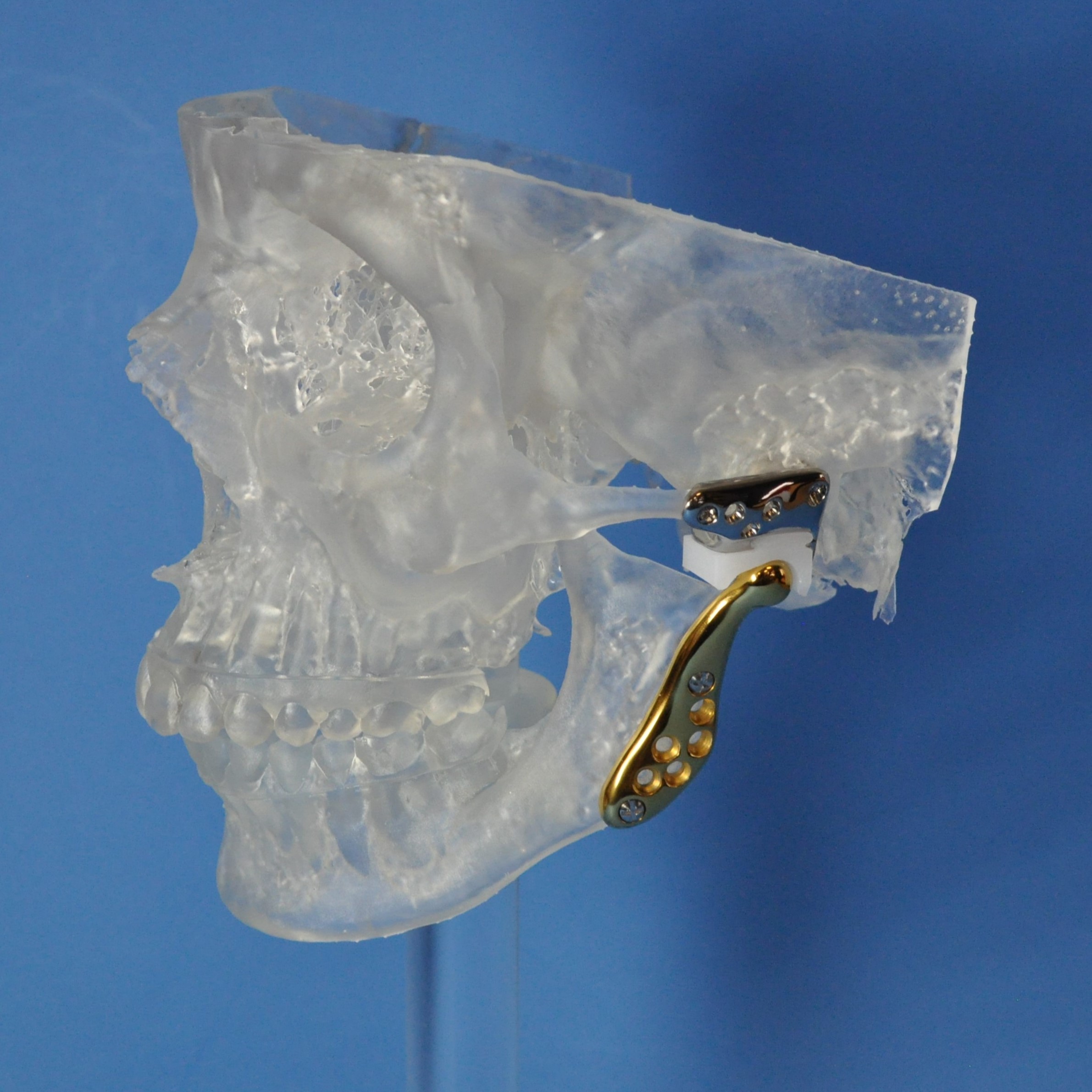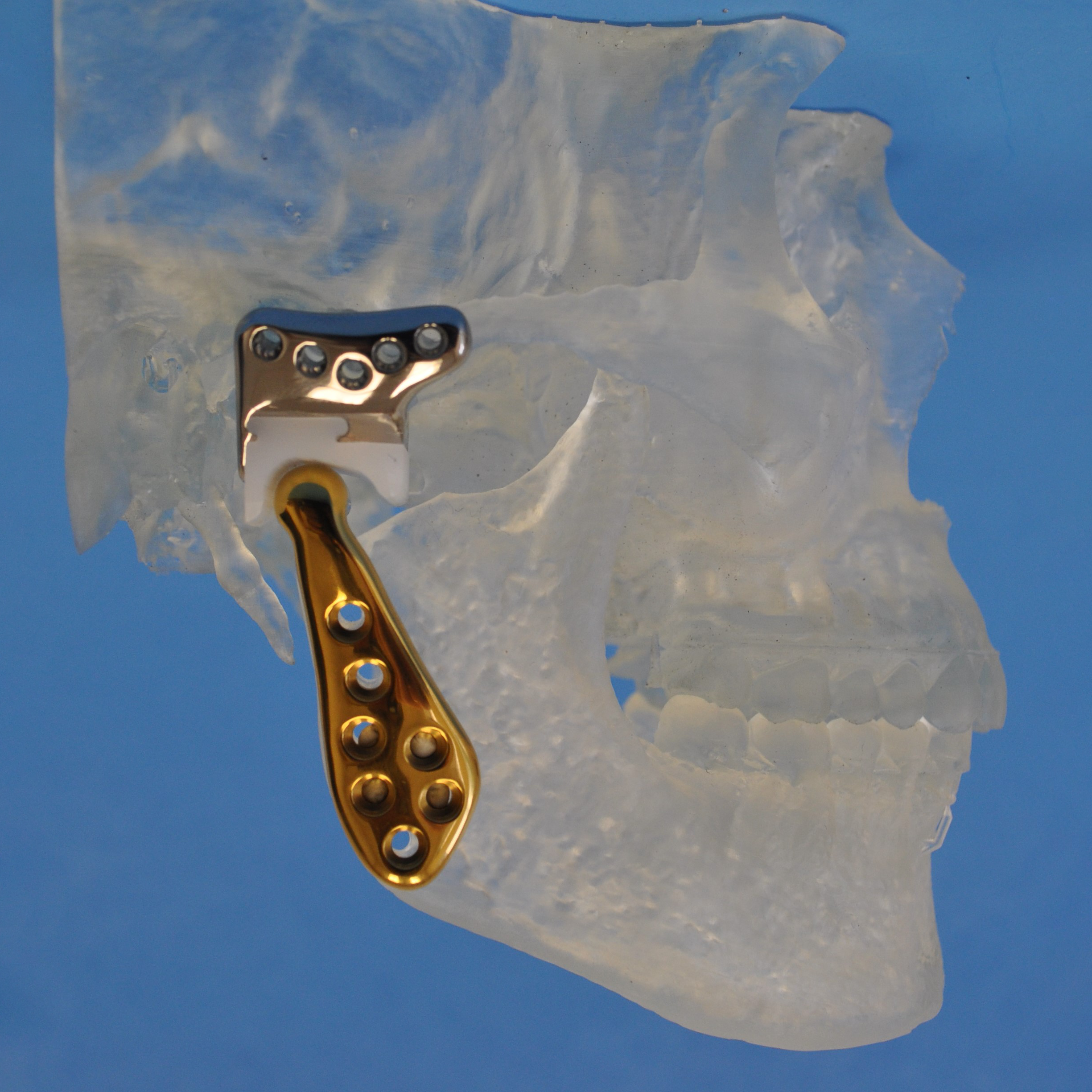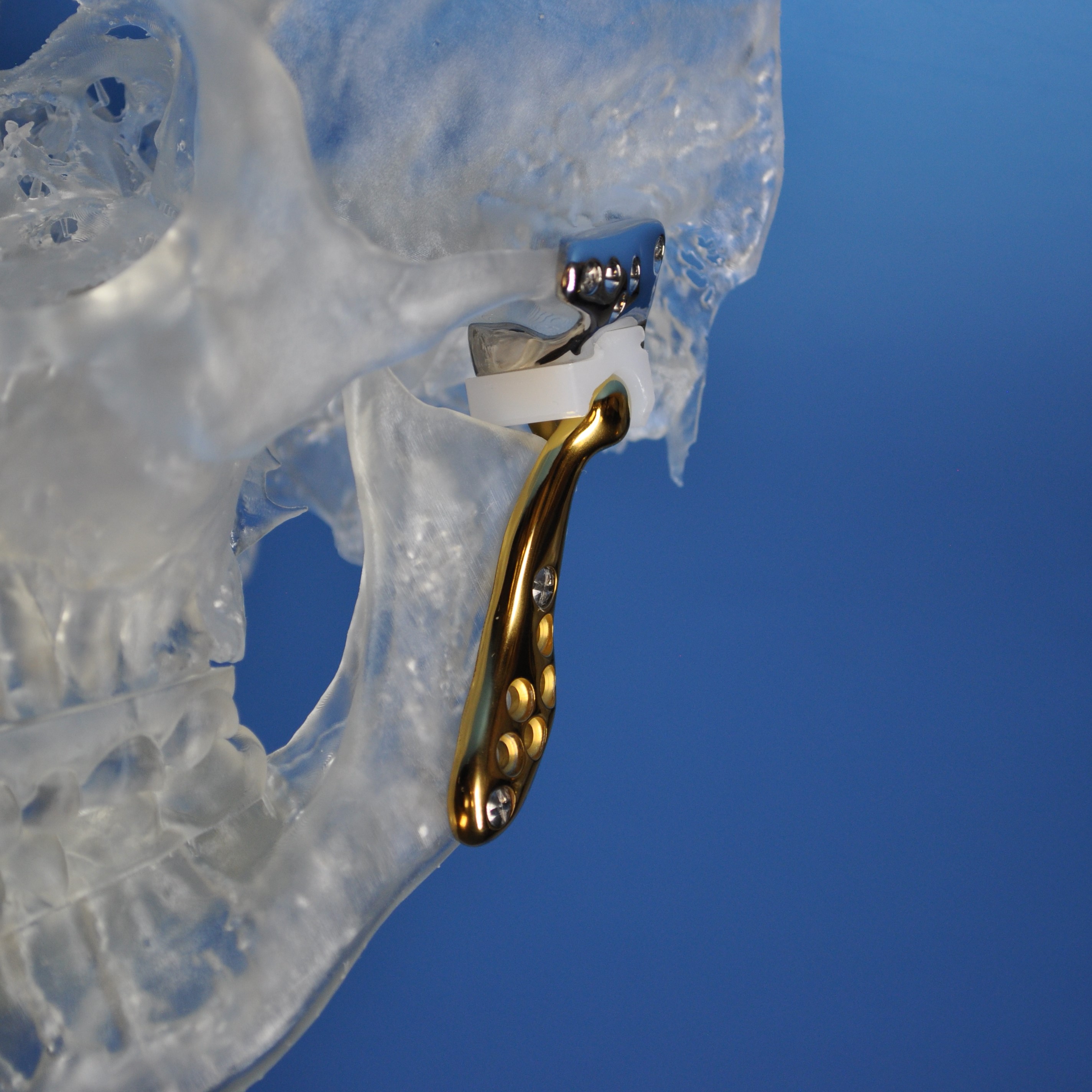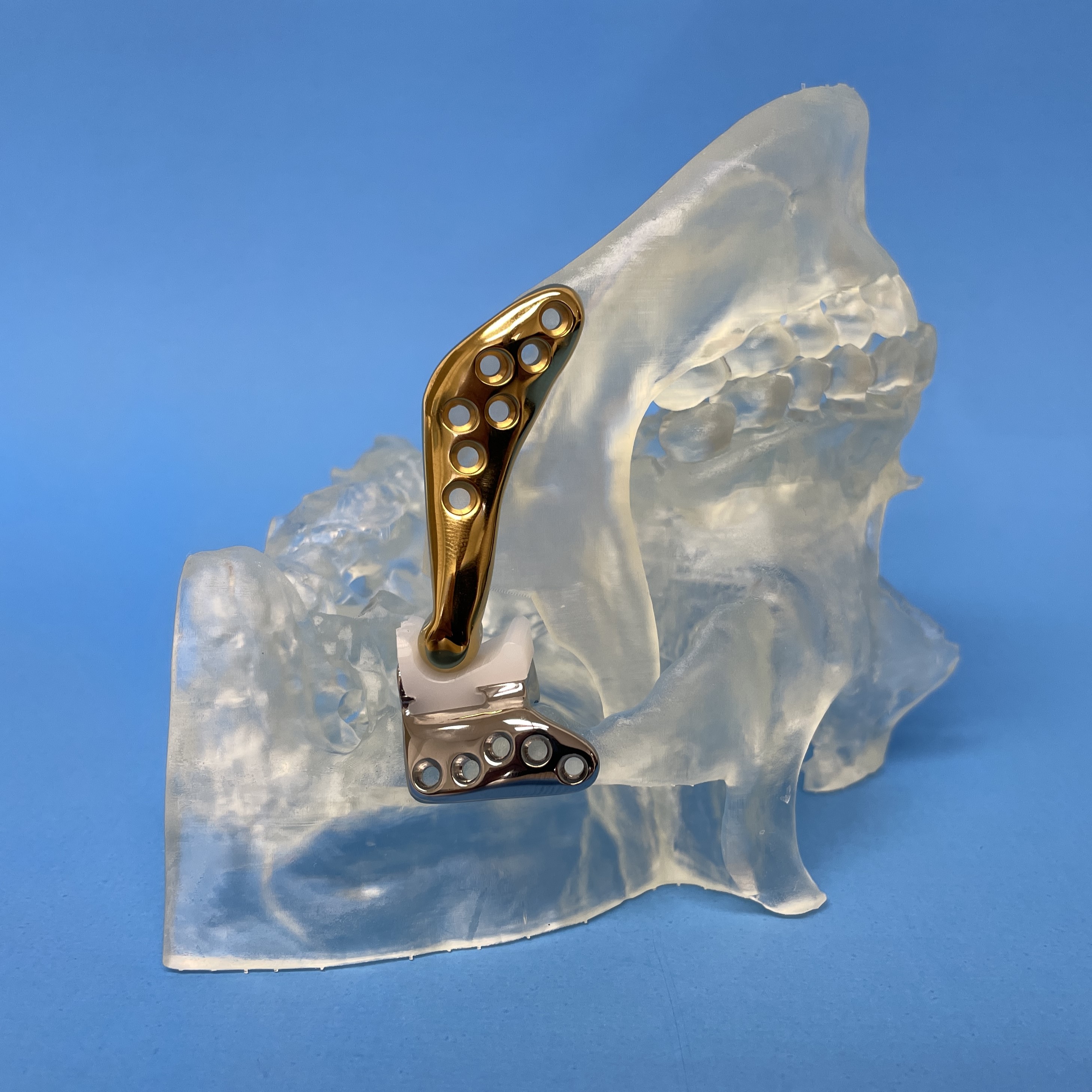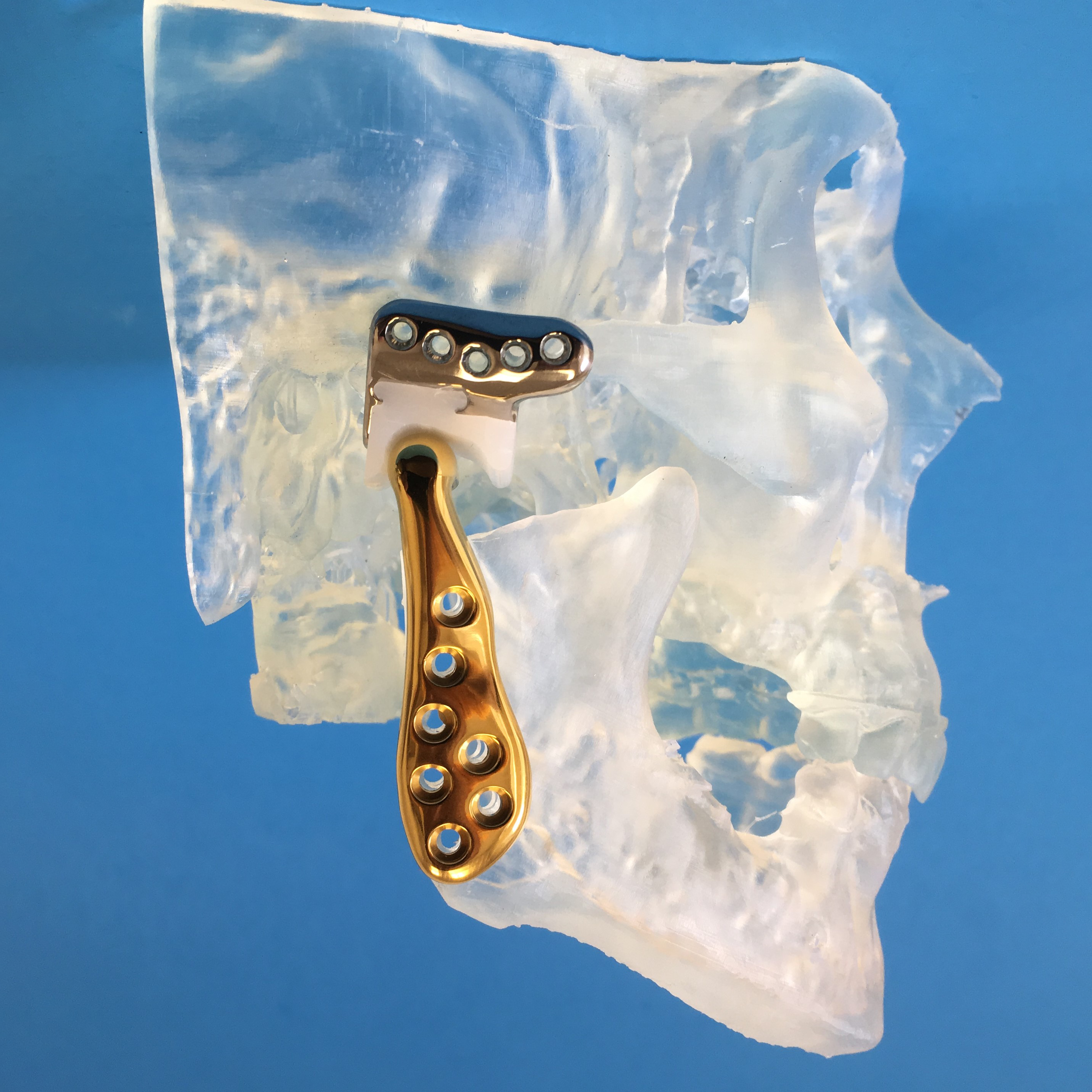ORTHOTIN PATIENT SPECIFIC JOINT REPLACEMENT SYSTEM
The OrthoTiN TMJ system is designed with focus on matching patient unique anatomy.
The implants geometry is based on the 3D skull model that is generated from the CT Scan of the specific patient.
OrthoTiN Prosthesis are intended to provide a custom bone fitting surface replacements for the joint maintaining maximum bone stock.
THE PROSTHESES ARE DIVIDED INTO A RAMUS AND FOSSA COMPONENT
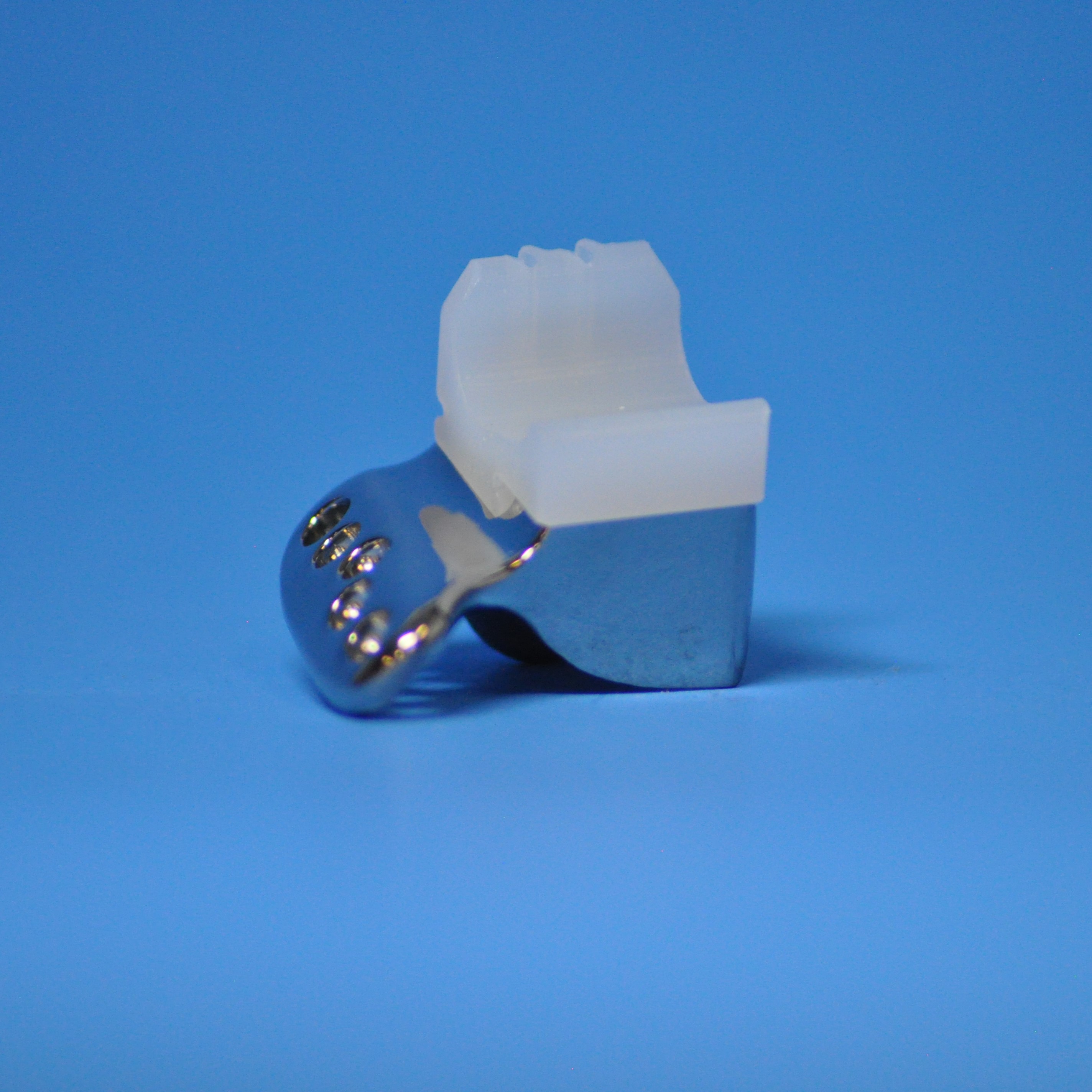
fossa-bearing
The fossa is comprised of a solid Titanium Alloy fossa component and a Polyethylene bearing that interlock together to serve as the anatomical glenoid fossa and articulate with the ramus prosthetic condylar head.
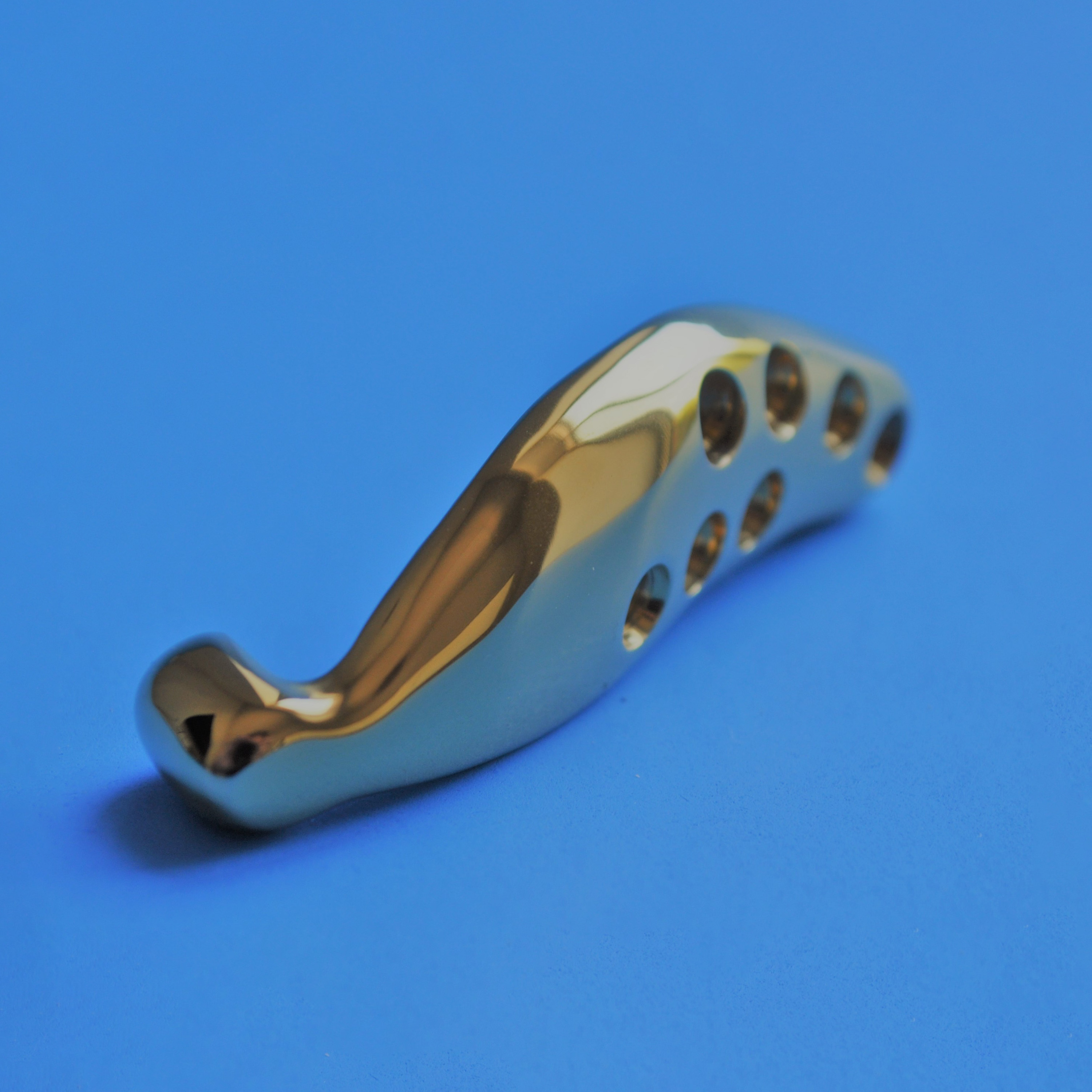
ramus
The ramus is also made using Titanium Alloy and it coated with a ceramic Titanium Nitride coating to greatly improve wear resistance on the articulating surface. This component is made specifically to match the patient's anatomical ramus.
model of facial skeleton
One of the advantages of a custom system is the familiarity of the patient's anatomy that the design team develops throughout the generation of the anatomical model as well as the prosthesis design. Using OrthoTiN's CT scan protocol results in scan data that best approximates patient anatomy and leads to a more accurate device. With an accurate representation of the patient's maxilla and mandible anatomy, surgical planning becomes more accessible and reliable. Osteotomy planning, occlusion adjustment, and any patient specific considerations can be addressed. A 3D model can be printed for verification of the design as well as for surgical reference and planning.
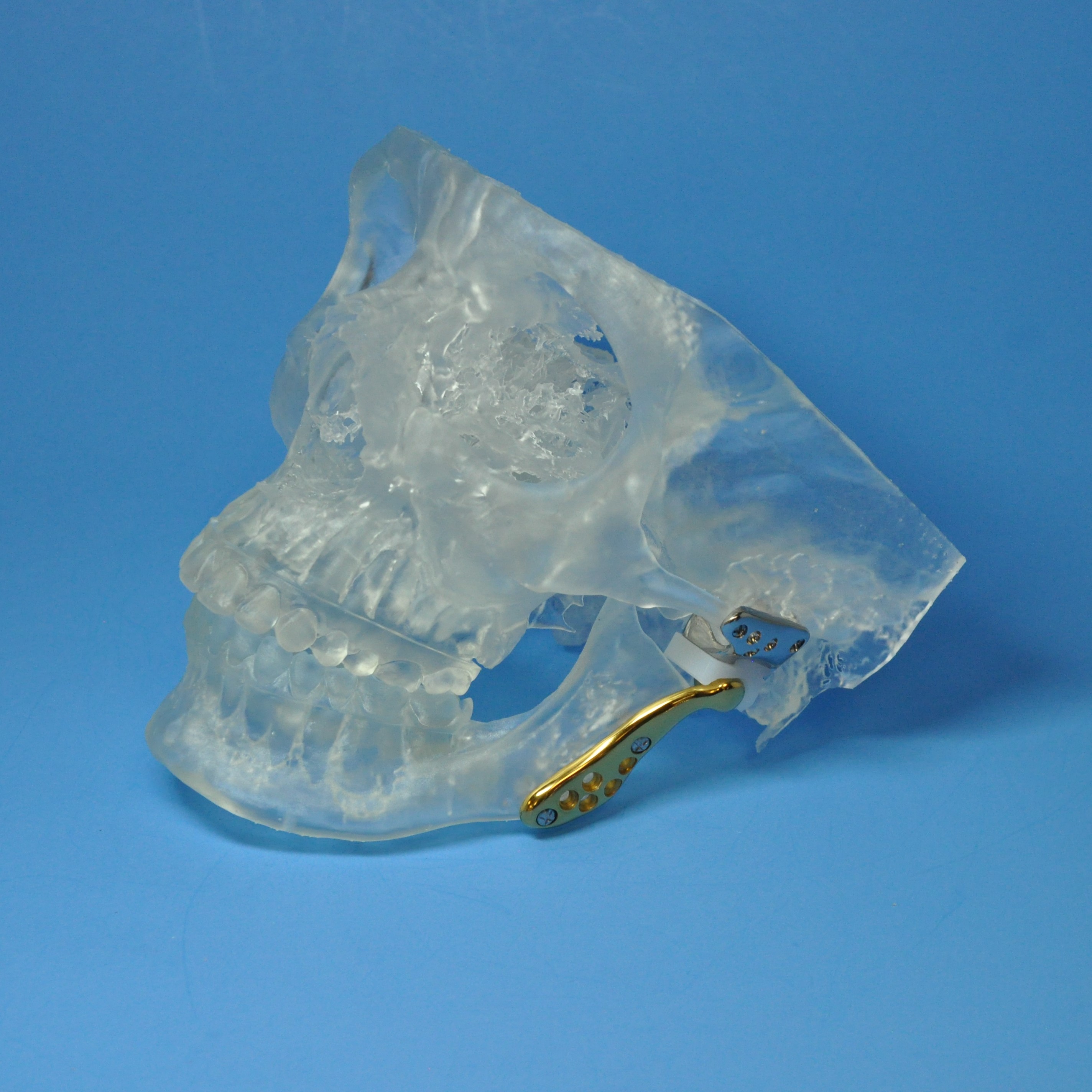
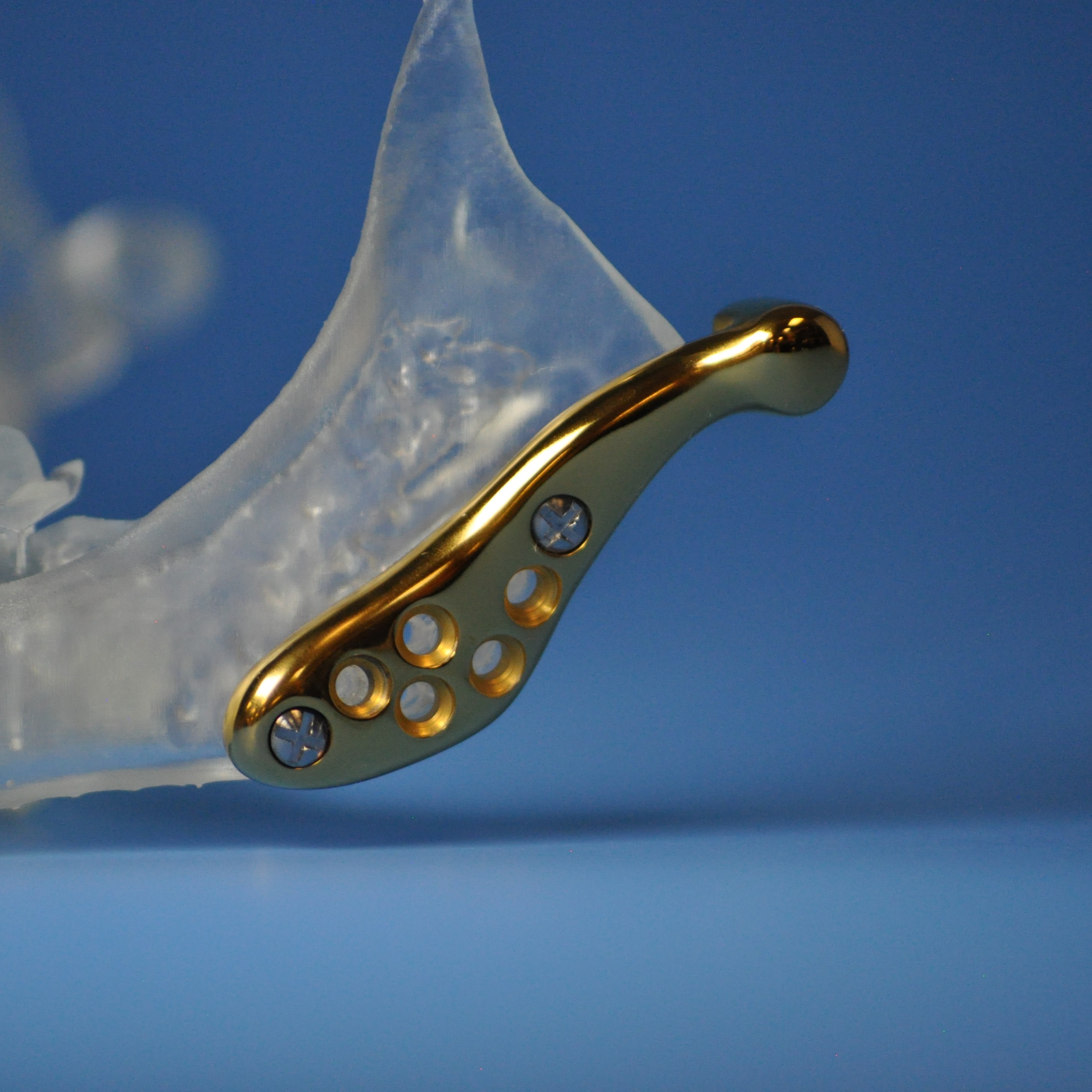
custom ramus
A standard flat ramus component may not be suitable for patients with irregularly shaped mandibular anatomy. Custom components allow for control over the shape of the condylar component, the flexibility of positioning of the screws, and the adaptation of the internal surface. Designs can be altered to increase fixation, adjust screw positioning, accommodate best bone stock, and to avoid interference with soft tissue. If the occlusion can be improved by adjusting the position of the mandible, the design of the ramus component can be altered accordingly.
custom fossa
A patient-specific fossa component makes complete contact with the anatomical surface, creates stability, and reduces micromotion. Stress within the component is reduced by efficiently transferring joint loads to the bone. In cases where a patient has anatomical deficits, the custom component is made for their unique circumstances.
